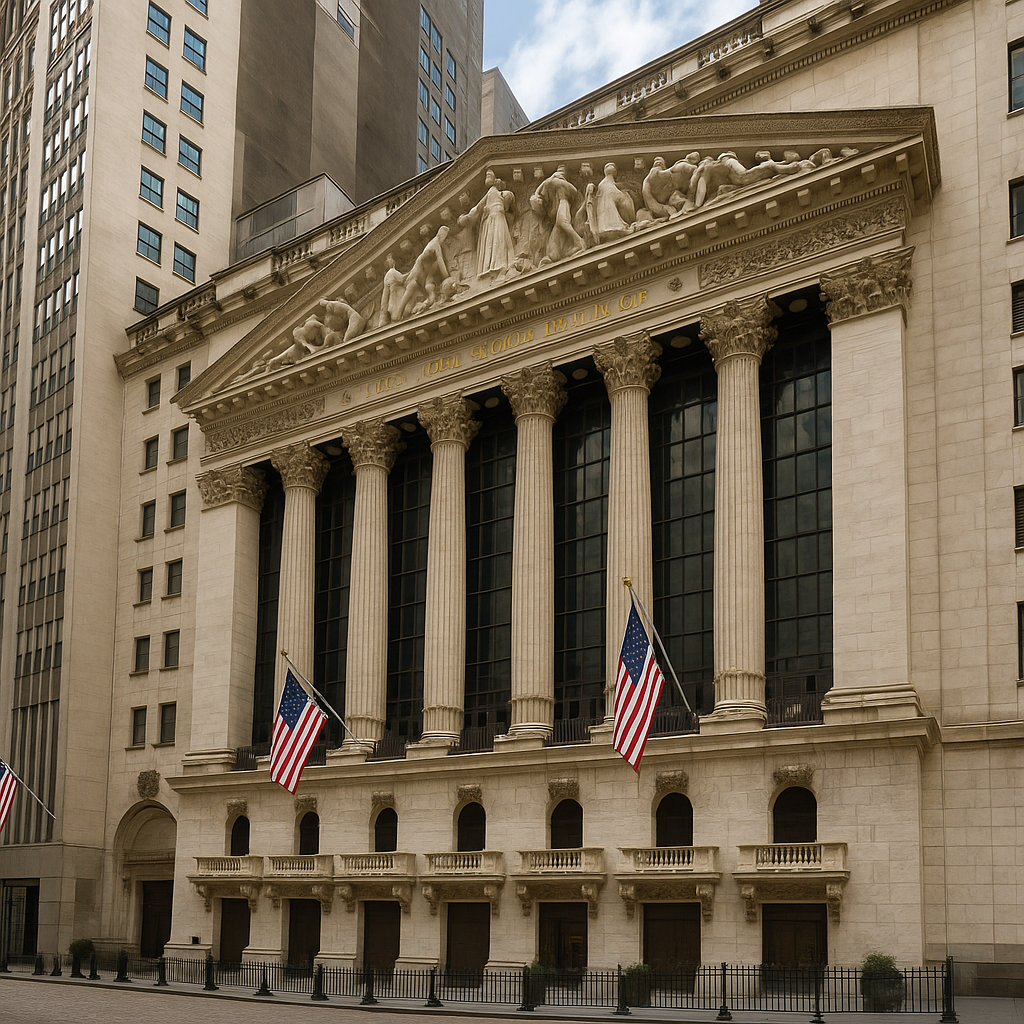
Overview of Hedge Fund Activity in Q3 2025
Here’s the twist: even as the S&P 500 and Nasdaq 100 rallied strongly in Q3 2025, many marquee hedge funds trimmed exposure to megacap tech, the market’s favorite trade all year [1]. Filings point to reduced stakes across the Magnificent Seven, including Nvidia, Amazon, Alphabet, and Meta. The tone wasn’t panic; it was surgical risk control, take profits, rebalance, and look for fresh edges [1].
You might be surprised that this broad cooling came after heavier buying in the prior quarter. According to available reports, managers rotated into software, e‑commerce, and payments names to diversify concentrated AI-heavy bets [1]. The pattern suggests a pivot from sheer momentum to more deliberate positioning.
What no one is mentioning: a rising market can still mask quiet de‑risking. The Q3 filings show exactly that, measured trims to the biggest winners while capital gets redeployed elsewhere [1].
Bridgewater Associates’ Portfolio Adjustments
Bridgewater’s playbook in Q3 was unmistakable: shrink the fattest tech exposures and lean into software. The firm slashed its Nvidia stake by nearly two‑thirds and more than halved Alphabet to roughly 2.65 million shares [2]. At the same time, it boosted positions in application software leaders like Adobe and Dynatrace, and added to Etsy, signaling a tilt toward recurring-revenue models and consumer platforms with improving operating leverage [2].
The sizing tells a story. Cutting Nvidia and Alphabet doesn’t read as an AI exit; it reads as a duration and single‑name volatility reset while maintaining exposure to the broader software stack [2]. For a multi-asset macro shop, that’s in character, keep the AI optionality, reduce headline risk.
Follow the repositioning trail and you’ll see a consistent theme: sustained interest in software where pricing power and subscription revenue can smooth the ride if AI hardware cyclicality bites [2].
Tiger Global’s Reductions and New Bets
Tiger Global moved aggressively on one front and opportunistically on another. It slashed its Meta stake by about 62.6% to 2.8 million shares, a sharp trim that crystallizes gains after a potent run [3]. Simultaneously, Tiger opened new positions in Netflix and Klarna, names that plug into consumer attention and fintech rails, respectively [3].
The exits matter too. Tiger stepped out of Eli Lilly, Novo Nordisk, and CrowdStrike, tightening focus while refreshing the growth roster [3]. The trade-off suggests a barbell: de‑risk a mega‑winner, add selective growth with improving fundamentals and unique catalysts.
In other words, still growth, but curated. Netflix offers cash flow strength and content catalysts; Klarna exposes Tiger to payments and checkout at a global scale, a different slice of the tech stack than AI GPUs or social ad rails [3].
Coatue Management’s Strategic Rotations
Coatue adjusted the AI mix rather than abandoning it. The fund cut its Nvidia position by 14.1% to 9.9 million shares while trimming Tesla, Amazon, and Arm, names that had surged and carry factor crowding risk [4]. In a calculated counter-move, Coatue raised Microsoft and Meta and added Alibaba, balancing near-term froth with platforms that monetize AI at the application and cloud layers [4].
This is classic portfolio engineering. A modest Nvidia trim still leaves a substantial core, but boosting Microsoft and Meta leans into AI diffusion across enterprise software and consumer engagement [4]. With Alibaba, Coatue re‑engages China e‑commerce and cloud exposure at more beaten-down valuations.
The takeaway: rotate within AI, not away from it. Keep the optionality, diversify the execution risk, and add idiosyncratic upside where the crowd is thinner [4].
Balyasny Asset Management’s Focus on Apple and Diversification
Balyasny made a bolder single‑name bet: it increased its Apple stake several‑fold in Q3, even as many peers lightened up across megacaps [5]. The fund simultaneously cut Amazon by about 41% and added American Tower, while raising AIG and Allstate, an eclectic mix that spreads exposure across consumer hardware, e‑commerce, real assets, and insurance [5].
Why that cocktail? Apple’s installed base and services growth can steady returns if hardware cycles wobble, while Amazon’s trim reduces concentration in a stock that remains sensitive to both retail margins and cloud pricing dynamics [5]. Towers provide inflation‑indexed cash flows; insurers benefit from higher yields, together, they can cushion beta in choppy risk cycles [5].
In short: Balyasny chased durability without surrendering upside. It is a different kind of tech hedge, one built with cash flow and rate sensitivity in mind [5].
Berkshire Hathaway’s New Alphabet Stake and Reduced Apple Position
Berkshire dropped the quarter’s headline surprise: a new Alphabet stake worth roughly $4.3 billion, amounting to 17.85 million shares as of September 30, 2025 [6]. In parallel, Berkshire continued to reduce Apple, trimming to about 238.2 million shares, but Apple still remained its largest investment by value as of quarter end [6]. That dual move tells you Berkshire wants core AI exposure through Alphabet’s cloud, search, and emerging models while keeping substantial, if moderated, Apple exposure [6].
There’s also a balance-sheet subtext. Berkshire was a net seller of equities during the quarter and lifted cash to record levels, which nods to valuation discipline while preserving dry powder for volatility [6]. Alphabet’s add is a quality‑at‑scale bet on AI monetization, not a speculative swing.
The signal: even the market’s most patient capital is tilting toward AI application layers while trimming oversized winners to manage single‑name risk [6].
Implications and Market Context
Step back and a cohesive picture emerges. Across managers, the Q3 trade was de‑risking concentrated megacap exposure, not abandoning tech altogether [1]. Allocations flowed toward software, payments, and select consumer platforms where AI benefits arrive via usage growth and margin expansion rather than inventory cycles [1].
Why now? After a multi‑quarter rally led by the Magnificent Seven, managers used strength to right‑size positions and reduce factor crowding. The outperformance of mega‑caps can compress forward returns, and Q3 offered exits at favorable marks while new ideas, Adobe, Dynatrace, Netflix, Klarna, Alibaba, presented different paths to AI and consumer demand [1][2][3][4].
Risk management is the through-line. Trimming Nvidia and Alphabet at Bridgewater, Meta at Tiger, and Nvidia at Coatue aren’t “AI is over” calls; they’re recalibrations to dampen drawdown risk if sentiment wobbles or earnings dispersion widens [2][3][4]. Meanwhile, Balyasny’s Apple add and Berkshire’s Alphabet entry show that blue-chip tech with defensible moats remains the core of many portfolios, just at more measured sizes [5][6].
For investors reading the tape: watch the application and monetization layers. If 2024–2025’s story was GPU scarcity and hyperscale capex, 2026’s could be software adoption, workflow integration, and consumer subscription stickiness, areas many funds quietly leaned into this quarter [1][2][4]. The rotation hints at a world where AI alpha shifts from hardware supply shocks to user growth, pricing power, and platform economics.
What to monitor next quarter: positioning stability around AI leaders if earnings guideposts hold, whether payments volumes re‑accelerate with disinflation, and how U.S. rates shape insurer and tower cash flows [1][5]. Also, keep an eye on China exposure via names like Alibaba as geopolitics and domestic demand fluctuate, an under‑owned swing factor in a market obsessed with U.S. mega‑caps [4].
Bottom line: the big funds didn’t bail on tech, they diversified within it. The new playbook favors durable growth, cash flow, and AI leverage without the single‑name whiplash, and Q3’s filings are the breadcrumb trail that shows the shift [1][2][3][4][5][6].
Sources
- Reuters – US hedge funds trim stakes in ‘Magnificent Seven’ stocks in third quarter
- Reuters – Some Wall St hedge funds trimmed megacap positions in 3rd quarter
- Reuters – Berkshire reveals new $4.3 billion Alphabet stake, sells more Apple
- Reuters – Tiger Global slashes Meta stake by 63%
- SEC EDGAR – Bridgewater Associates, LP – Form 13F-HR (Q3 2025)
- SEC EDGAR – Berkshire Hathaway Inc. – Form 13F-HR (Q3 2025)

